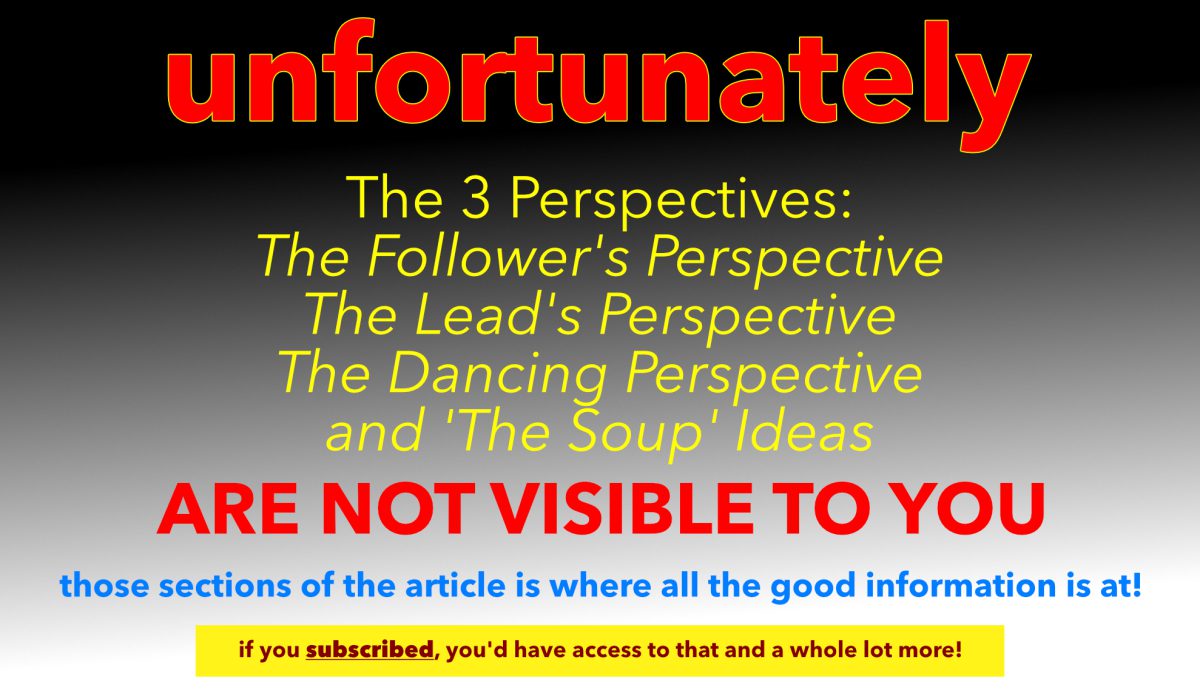The Argentine Rock Step is a very venerable piece of tango vocabulary it’s used quite often as a way to avoid a hazard, and infrequently as a what is primarily supposed to be used for as musical interpretation. More often than naught for a lot of people the addition of the Rock Step is where they stop developing kinesthetically. This becomes their experience, their go to move, and they don’t realize that this is the case. So let’s talk about Today’s Tango Topic: The Argentine Rock Step.
What is A Rock Step ? First let’s define what the word ‘Rock’ means. According to Webster’s Dictionary, the English word ‘Rock’ in this case is being used as a verb. It has a noun form, which means “a mass of stone”. In its verb form, it means “to sway back and forth”. Next, when we apply that idea to Dancing, a‘Rock’ Step means that you have a step that is going to go from weight transfer to weight transfer, very quickly.
An Argentine Rock Step is a little different. It refers to a very specific construct and is not swaying to from side to side, but actually weight transfer to weight transfer (usually back and forth) sometimes with a Resolution (more on that later). In a lot of ways, a ‘Rock’ Step appears to look like (operative word) as if the couple dancing is a Rocking Chair. The Argentine Rock Step is in the family of ‘Alterations’ of Tango Vocabulary. Meaning that due to a possible Resolution, the Follower’s direction (orientation) changes as a result. One more thing: There is a distinct and clear difference between an Argentine Rock Step and a Check Step and/or Incremental Step as shown in the video below:

The video above shows the difference between the two (and one possible error that happens quite frequently). A Check Step has no weight transfer forward (for the lead) and backwards (for the follower). In the case of the Rock Step there is a clear, and definitive weight transfer backwards AND THEN forwards. 🙂
The Free Tip. Stop squeezing your partners! This really about intention, or the lack therein. You lock your arm frame and think that in doing so it will stop your partner from moving. No. All it does is put more money in their chiropractor’s pocket! How does this relate to the Rock Step. Frequently the Rock is led and followed as a ‘jerky’ motion. The Rock Step out (the back step for the Follower, the Linear forward step for the Lead) isn’t the problem. It’s the coming back to resolution part, that is usually jerky, the Lead will PULL their partners back to them instead of stepping back gracefully. Tsk, tsk, tsk.

Pre-Requisites: Walking. Weight Changes. Extensions. One does have to have mastered one’s walk and possess stability in their embrace without using the embrace for stabilization against their partners before they can initiate these ideas.
About The Video. This video comes is 14:16 in length in ONE section broken up by markers. Both lead and follower technique are combined and integrated in the video.
Section 1 – Introduction – 00:00:48
Section 2 – Lead Technique/Follower Technique – 00:01:15
Section 3 – Side Step Resolutions – 00:02:06
Section 4 – Parallel Linear Rock Steps (Example: Close Embrace) – 00:00:20
Section 5 – Parallel Linear Rock Steps/Resolution (Example: Close Embrace) – 00:00:18
Section 6 – Cross System Rock Steps – 00:01:27
Section 7 – Cross System Resolutions – 00:02:38
Section 8 – Cross System Examples with Resolutions – 00:01:20
Section 9 – Linked Rock Steps (Multiples) – 00:01:50
Section 10 – Chained Rock Steps with Resolutions & Closure – 00:01:57.

